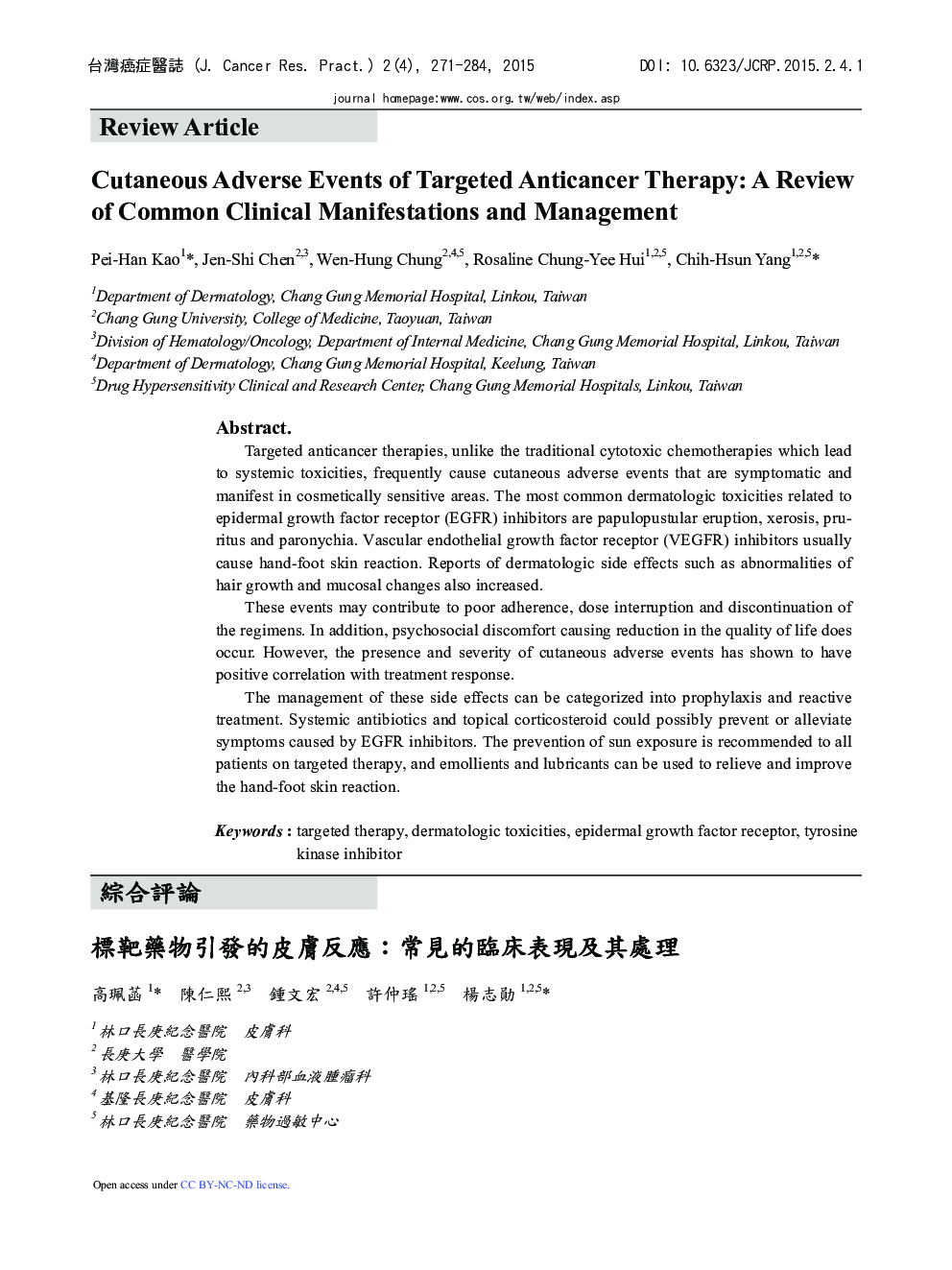| Article ID | Journal | Published Year | Pages | File Type |
|---|---|---|---|---|
| 3988783 | Journal of Cancer Research and Practice | 2015 | 14 Pages |
Targeted anticancer therapies, unlike the traditional cytotoxic chemotherapies which lead to systemic toxicities, frequently cause cutaneous adverse events that are symptomatic and manifest in cosmetically sensitive areas. The most common dermatologic toxicities related to epidermal growth factor receptor (EGFR) inhibitors are papulopustular eruption, xerosis, pruritus and paronychia. Vascular endothelial growth factor receptor (VEGFR) inhibitors usually cause hand-foot skin reaction. Reports of dermatologic side effects such as abnormalities of hair growth and mucosal changes also increased.These events may contribute to poor adherence, dose interruption and discontinuation of the regimens. In addition, psychosocial discomfort causing reduction in the quality of life does occur. However, the presence and severity of cutaneous adverse events has shown to have positive correlation with treatment response.The management of these side effects can be categorized into prophylaxis and reactive treatment. Systemic antibiotics and topical corticosteroid could possibly prevent or alleviate symptoms caused by EGFR inhibitors. The prevention of sun exposure is recommended to all patients on targeted therapy, and emollients and lubricants can be used to relieve and improve the hand-foot skin reaction.
